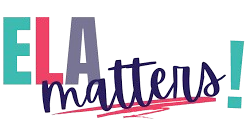As ELA teachers, we understand how important it is for students to become good writers. Students learn the different modes of writing, but how often do we provide opportunities for reflective writing? Reflective writing is a way for our students to think about their learning experiences and understanding of the skills we’re teaching. It can help them reflect on their thinking processes, strengths, challenges, and areas for improvement. Here are some ways I incorporate it into my classroom and ideas you can use to get started.
Journaling:
Journaling is a great entry activity for reflective writing. I provide students with writing prompts related to their learning experiences like “What were the three most important points from today’s lesson?” “What was something that surprised you about today’s lesson?” or “What challenges did you face in learning the material?” Be sure to establish a safe space where your students will want to write freely and express their thoughts and emotions without fear of judgment.
Learning Reflection:
I use response journals and topics that invite my students to engage with lesson content through written reflections. After completing a reading assignment or classroom activity, I ask students to write a response reflecting on their understanding of the content, connections to their own lives, and questions they have about the material. I provide specific prompts to guide students’ reflections, such as “How did the main character’s actions impact the plot?” or “What connections can you make between this text and current events?” Read more about reading response in this post.
Progress and Work Reflection:
After students have completed an assignment like a project or written essay, have them reflect on the quality of their work and how closely it met the expectations of your grading rubric. You can also have them reflect on their effort on the assignment for things like time management and completion. Some good questions for this are “What would you do differently on this kind of assignment next time?” “What part of the assignment reflects your best work?” “Which part of your work could be improved?”
Goal Setting:
Another great reflective writing idea relates to goal setting. I ask students to write about their academic or personal goals and reflect on the action steps they need to take to achieve them. You can encourage your students to revisit their goals periodically to track their progress and make changes and adjustments. I do a weekly check-in with students to monitor their goal progress. It takes just a few minutes, and the benefits are worth it. This goal-setting resource works well for middle school students.
Peer Feedback Reflection:
Once your students receive feedback from a peer on a writing assignment, give them the chance to reflect. This encourages students to assess their own writing critically by considering the suggestions and comments of their peers. I encourage them to consider their peer’s input and how they can use that information to improve their writing. When writing about peer feedback, I also ask my students to explain how they felt about having their work critiqued.

